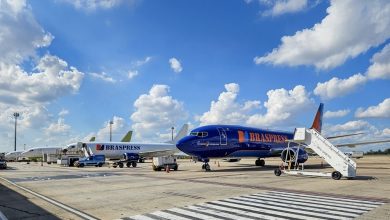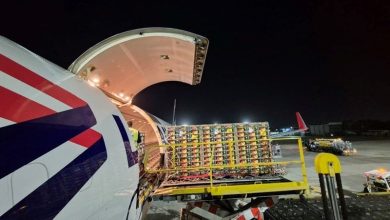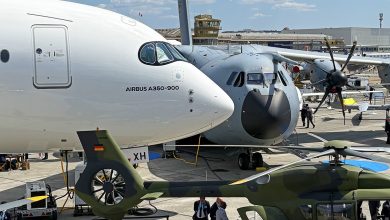Preços de combustíveis apresentaram queda no preço

As business aviation continues its slow rebound from the economic downturn that began nearly nine years ago, the number of operations in the U.S. have been climbing since 2010 and, according to industry data provider Argus, business aviation logged gains in flight activity for 11 of the 12 calendar months last year. For the year, flights were up 3.2 percent and flight hours were up 3.8 percent over 2015.
Against this backdrop, the price of jet-A last year was the lowest in a decade, averaging $3.31 a gallon nationwide (25 cents less than in 2015), according to industry fuel data provider Fuelerlinx. The decrease corresponds with data from the U.S. Energy Information Administration, which shows a 30-cent year-over-year decline in the refiners’ wholesale per gallon price for U.S. kerosene-type jet fuel, which at an average of $1.29 a gallon was the lowest in a decade. “Last year’s cheap prices, whether for gasoline, diesel or for jet fuel, were the lowest since 2004,” said Tom Kloza, global head of energy analysis for industry data provider Oil Price Information Service. “This year it’s going to be modestly more expensive.
The price for benchmark WTI crude was $42 per barrel last year, and while that number has trended up slightly this year, Kloza said prices will still compare favorably to those seen earlier in the decade. “I would say something in the $40 [per barrel range] is going to represent the trough, and something close to $60 is going to represent the top.”
He noted that refining capacity in the U.S. is now two million gallons a day higher than it was in 2000. A sizable portion is tilted toward the production of jet fuel, which, unlike gasoline and diesel, is not mandated to be mixed with renewable fuel or incur a renewable identification number credit penalty if not blended. “There is no renewable fuels blending obligation for jet fuel, so guess what refiners did. They said, ‘I’m going to make as much jet fuel as I can and don’t have to worry about buying these credits that I need for gasoline and diesel,’ so that really helped tilt the yield for jet fuel higher,” observed Kloza.
UNCERTAIN CONDITIONS
Despite his prediction, Kloza noted there are always wild cards. The oil-rich Gulf Coast has escaped hurricanes causing infrastructure damage since Hurricanes Katrina and Rita in 2005. “If you believe in ‘due,’ you might say we’re overdue,” he told AIN. “There hasn’t been a substantial change in infrastructure where we’ve put aside some reserves or we’ve got a backup plan if a hurricane were to come ashore at Port Arthur, New Orleans or Corpus Christi, so that’s the one thing that could temporarily send prices sky high.”
The current political climate in Washington is another wild card as lawmakers have floated the idea of an import fee on foreign products, including oil. If enacted, the tax could tack on an extra $10 to $12 a barrel, Kloza noted. The increasingly adversarial rhetoric toward Iran, and the possibility of new sanctions, could also affect global petroleum prices. “You never know,” said Kloza. “The one predictable thing about this administration is its lack of predictability.”
Despite the lower price of fuel, corporate budget cutting brought on by the downturn has made flight departments more cost-conscious than ever. “Operators are noting the discrepancy in price across the globe,” said Jonathan Boyle, Avfuel’s vice president for contract fuel. He noted that variables in fuel price typically can be distilled down to location, whether because of transportation costs to a remote area, local taxes and fees, or the costs of the operation pumping the fuel.
How customers purchase fuel has changed immensely over the past three decades, driven by innovations in technology and aircraft efficiency. While it was once a given that an airplane landing at an airport would require fuel, with today’s more efficient aircraft, other factors now come into play when crews decide when and how much fuel to take on. “We’ve noticed that flight departments are taking into account more variables when purchasing fuel quantities,” noted Jessica McClintock, client relations manager with California-based Fuelerlinx. “For example, the cost of carrying fuel and/or minimum uplift amounts to avoid ramp fees.”
CONTRACT FUEL
“In today’s market, few purchases use the traditional, full retail model,” said Michael Szczechowski, senior vice president with World Fuel Services. Most FBOs offer some form of a discount, decided by volume, contract or home-based supply.” Indeed, at some locations the fuel provider might inflate the pump price in expectation of haggling over price; at other airports, where the airport authority may be in charge of fueling operations, the price is the price.
Among the most important innovations in the aviation jet-A industry was the advent of contract fueling, a system that leverages the buying power of millions of gallons of fuel. “With a contract-fuel program, operators can obtain the least expensive jet fuel from various supplier-branded locations and different fuel providers,” said George Guirgis, director of Universal Weather and Aviation’s UVair program. “Business aircraft operators do not have to contact multiple fuel providers and do not need to maintain a number of different credit lines with various oil companies and fuel providers.”
He added that contract fuel programs arrange fuel credit worldwide, either with aviation fuel cards such as the UVair card, often accepted at point of sale, or by fuel release when necessary. Some programs even assist operators in gaining exemptions or refunds on value added tax (VAT) and excise duties on fuel. “Our focus is not just competitive pricing,” noted Guirgis. “It’s also making sure the operator understands all fuel-related costs involved.”
Some providers, such as Phillips 66, do not require fuel cards or fuel releases from their customers, who purchase fuel directly from the refiner itself. The company first offered contract fuel to airlines, cargo and other services four decades ago, and finally began offering contract fuel for both jet-A and avgas to corporate and charter operators last year.
While there are many such programs to choose from, operators should compare them to see which provide the best coverage in the areas most frequented. “Customers need to choose programs that best fit their individual requirements,” suggested Julio Casas, AirBP’s general aviation director for North America. “For example, a customer who owns a PC-12NG has needs different from those of an owner with five Globals.” Customers should consider what sort of missions they will be undertaking before selecting a provider, he added, and compose a wish list of what they want from a fuel supplier. “A customer should match that list against which supplier has the most reliable, safe technical support and ability to respond when needed,” he said.
“For day-to-day operations, it is important to use one that has the supply and financial strength to cover the globe no matter where you travel,” added Szczechowski.
Most in the industry suggest cultivating a core group of providers that serve their needs in the majority of their destinations. “We’ve noticed that many operators are looking to limit the number of fuel providers they work with to get better pricing and expand their volume discount with those providers,” said Jonny Eskander, sales executive with AEG Fuels.
While most major fuel providers offer customer loyalty programs enabling users to translate their frequent use and volume purchases into rewards, clients should always have an eye on the bottom line. “One word of caution for flight departments: contract fuel pricing can be a double-edged sword,” warned Connie Pierpoint, Epic Fuels’ vice president of client services. “Price offers from some providers and resellers may seem to be lower than posted fuel prices, but be sure to check all of the fees. Various suppliers add on a margin on the back end.”
TECHNOLOGY ADVANCES
Widely lauded are the recent innovations in information technology and communications that allow customers to access current fuel pricing. The industry has come a long way since the days when a phone call was the only way to determine fueling costs at a destination. Flight departments today have many resources at their fingertips to review pricing, through accounts direct from the fuel providers or through fuel pricing consolidators such as Fuelerlinx, which take into account all of a customer’s specific fuel pricing from numerous providers and even can provide advice on tankering by factoring in ramp fee avoidance and multi-leg pricing. “If done correctly, technology should act as a tool for greater productivity and access to all participants in the fuel buying process,” noted company president Kevin Moller.
But it’s not just the individual flight fueling purchase that is improving. “On the analytical side, the technology is changing hugely,” said James Kossick, fuel manager with UK-based flight support provider Flightworx, which offers an independent and neutral fuel comparison and procurement service. “People are coming up with these fantastic new platforms that really analyze your fuel costs, your landing costs, the whole package, and tell you where you’re overspending and where you’re doing well, and I think it can only benefit the industry.” He noted that his company will provide fueling advice for far-flung regions, even to non-customers.
The major providers are consistently improving their customer offerings and services. World Fuel Services recently simplified its contract fuel program, which is now supported by the World Fuel/Colt Card, and enhanced the FlyBuys Rewards website. The site offers more rewards options across 145 countries and it allows users to donate points to the charity of their choice if such rewards are not permitted by corporate policy.
AirBP, which acquired a stake in trip-support company RocketRoute, assisted in the development of a fuel app that was launched last year. Beyond simple payment, it allows AirBP’s Sterling Card holders to offset carbon emissions of the fuel purchased.
In February, Epic Fuels was selected as the issuer of the new Signature Flight Support Aviation Card, which will be accepted at all Signature and Epic-branded FBOs. The new card has added the option for cash rewards or gift cards to the Bravo loyalty program.
Ann Arbor, Mich.-based Avfuel retooled its Avtrip rewards program this year to incorporate tiered membership that considers fuel uplift and FBOs visited. In the base silver tier, customers will earn rewards as they had previously. Customers who reach the gold and platinum tiers, through greater fuel uplifts at participating locations or by visiting more unique Avtrip FBOs, receive more points per gallon.
Shell Aviation distributor Eastern Aviation Fuels noted it will soon be introducing a co-branded fuel card with U.S. Bank Multi Service Aviation and has seen continued growth in the Shell AeroClass loyalty program.
Phillips 66 added that some of the branded FBOs that participate in its WingPoints customer rewards program will issue points on contract fuel transactions.
Fonte: 06/04/2017 Ain Online





